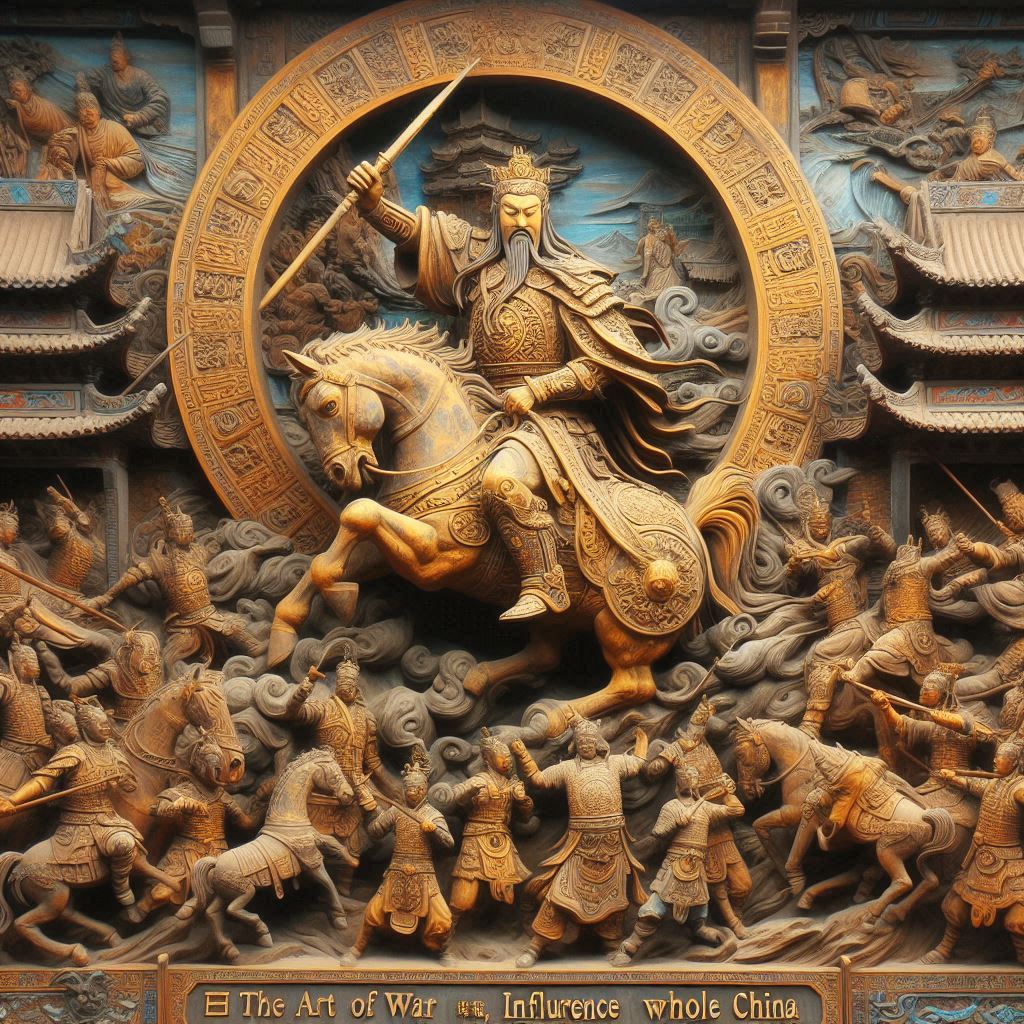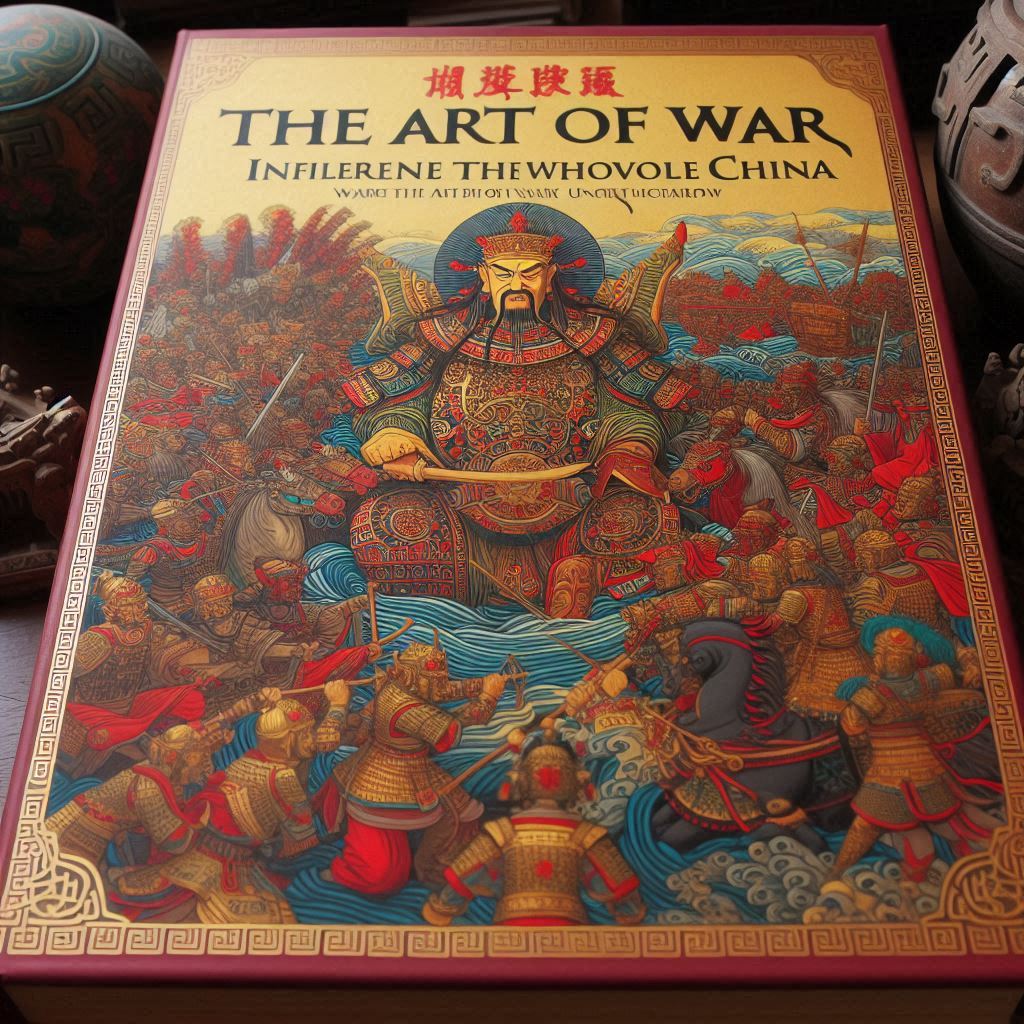中國古代最著名的軍事著作:《孫子兵法》
《孫子兵法》是中國古代最著名的軍事著作之一,被譽為世界上最早的軍事理論書籍,也是最具影響力的戰略經典之一。該書的作者被廣泛認為是春秋時期的著名軍事家孫武。他被視為中國歷史上的卓越軍事家,其思想對中國以及世界範圍內的軍事理論和實踐產生深遠的影響。
《孫子兵法》全書共十三篇,每一篇都圍繞著軍事戰略和戰術展開論述,內容涵蓋戰爭的方方面面,從如何準備戰爭到如何運用計謀取勝,提供詳細的指導。這些篇章分別為《始計》、《作戰》、《謀攻》、《軍形》、《兵勢》、《虛實》、《軍爭》、《九變》、《行軍》、《地形》、《九地》、《火攻》和《用間》。
在兵法中,孫武強調「不戰而屈人之兵」的戰略思想,認為最高的勝利是通過智慧和謀略來避免戰爭或在戰爭中以最小的代價取得勝利,而非僅僅依靠武力。主張在戰爭中,將領應該深謀遠慮,善於利用形勢、兵力和敵方的弱點,採取靈活多變的戰略,並且要懂得如何在不同的戰場環境中作出相應的戰術調整。特別強調「知己知彼,百戰不殆」的理念,即在戰爭中,了解自己和敵人的情況是取勝的關鍵。這一觀點不僅在軍事上適用,也被廣泛應用於商業、政治等領域。孫武還提出「兵貴勝,不貴久」的觀點,認為戰爭應該速戰速決,以減少損失和避免國家的疲憊。
《孫子兵法》在歷史上對許多軍事家和領袖產生重要影響,不僅在中國,還包括日本、朝鮮、越南等亞洲國家,以及歐美各國的軍事理論家。例如,日本的武士道和歐美的戰略學習者都從《孫子兵法》中汲取大量的智慧和戰略思維。這部書的智慧並不僅限於軍事領域,它的思想還被廣泛應用於現代商業管理、政治策略和國際關係等各個方面。例如,企業家常常引用書中的戰略思想來指導商業競爭,政治家則用它來設計外交策略。
總之,這是一部集軍事、哲學、政治、管理等多方面智慧於一體的經典著作,其影響力超越時間和地域,不僅在古代戰場上指導無數的軍事行動,今天仍然在現代社會的各個領域發揮著重要作用。
The Art of War is one of the most renowned ancient Chinese military treatises, often regarded as the world's earliest work on military theory and one of the most influential classics of strategy. The book is widely attributed to Sun Tzu, a famous military strategist from the Spring and Autumn period. He is considered one of China's greatest military minds, and his ideas have had a profound impact on military theory and practice, both in China and globally.
The Art of War consists of thirteen chapters, each focusing on different aspects of military strategy and tactics, covering the entire spectrum of warfare—from preparation and planning to the use of deception and intelligence to achieve victory. The chapters are titled "Laying Plans," "Waging War," "Attack by Stratagem," "Tactical Dispositions," "Energy," "Weak Points and Strong," "Maneuvering," "Variation in Tactics," "The Army on the March," "Terrain," "The Nine Situations," "The Attack by Fire," and "The Use of Spies."
In the treatise, Sun Tzu emphasizes the strategic concept of "winning without fighting," asserting that the highest form of victory is achieved through wisdom and strategy, avoiding warfare or winning with minimal cost, rather than relying solely on brute force. He advocates that in war, a commander should be deeply thoughtful, skillfully exploit circumstances, leverage strengths, and exploit the enemy's weaknesses. He also advises the use of flexible and adaptable strategies, making tactical adjustments based on the varying conditions of the battlefield.
One of the key concepts emphasized in the book is "Know thyself, know thy enemy; a hundred battles, a hundred victories." This principle suggests that understanding both oneself and the enemy is crucial for success in warfare. This concept has been applied not only in military contexts but also broadly in business, politics, and other fields. Sun Tzu also introduced the idea that "speed is the essence of war," arguing that wars should be fought swiftly to minimize losses and avoid exhausting the state.
Throughout history, The Art of War has influenced many military leaders and strategists, not only in China but also in Japan, Korea, Vietnam, and Western countries. For instance, the Japanese Bushido code and Western strategists have drawn extensively from the wisdom and strategic thinking found in the text.
The wisdom of The Art of War extends beyond military applications. Its principles have been widely applied in modern business management, political strategy, and international relations. Entrepreneurs often refer to its strategic concepts to guide business competition, while politicians use it to formulate diplomatic strategies.
In summary, The Art of War is a classic work that integrates military, philosophical, political, and management wisdom. Its influence transcends time and geography, having guided countless military actions on ancient battlefields and continuing to play an important role in various aspects of modern society today.


照片:DALLE3
- 1
- 2
- 3
- 4
